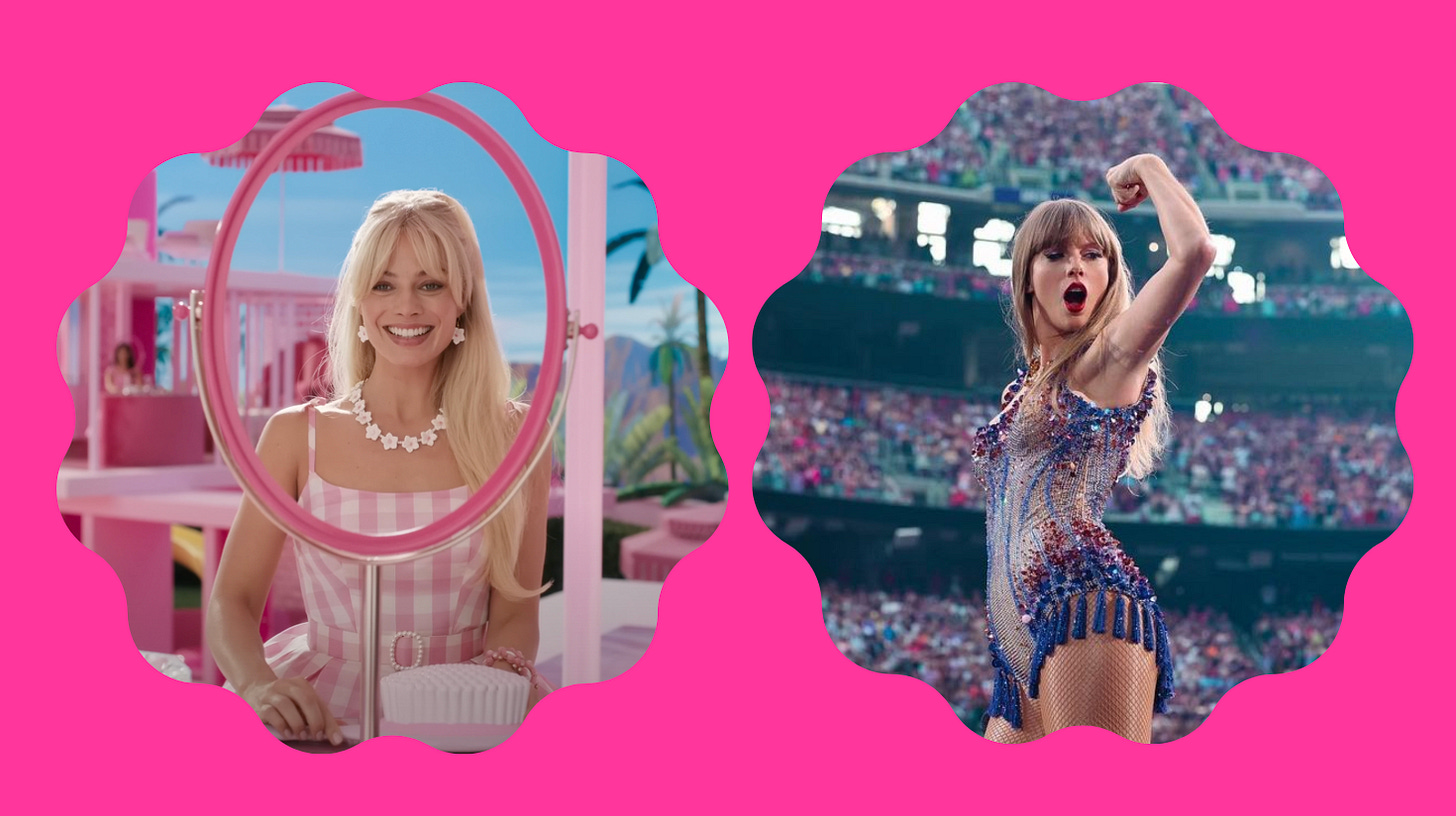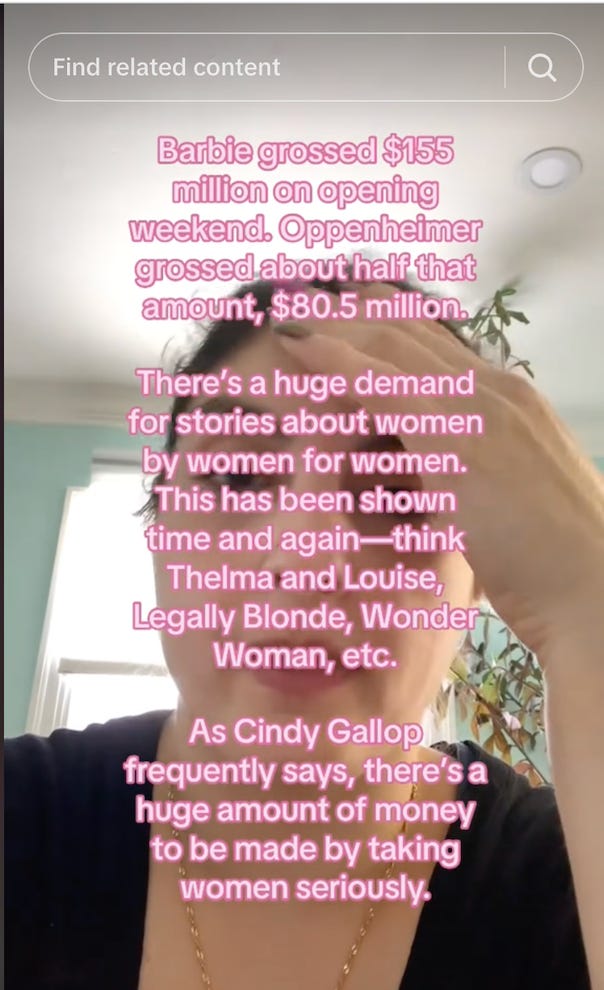Hot Pink Money: Taylor Swift, Barbie and Viviana Zelizer
My five cents about the success of Barbie and Eras tour explained with Viviana Zelizer
The summer of 2023 was indelibly shaped by Taylor Swift, Barbie, and Viviana Zelizer. If you spend at least a reasonable amount of time on social media, chances are, you are familiar with the first two. The third one is a profoundly inspiring economic sociologist whose theories I am currently using for my PhD dissertation about influencers’ labour. This summer she was honored by two prestigious awards from the American Sociological Association. A recent TikTok on my FYP prompted me to consider that Zelizer’s insights might provide an explanation of the success of the first ones.
Big money of Barbie & the Eras Tour
Barbie and the Eras Tour are claimed to be saving the world (Western) economy from recession. Greta Gerwig’s fantasy comedy, Barbie, has crossed $537.5 million at the US box office. Speaking from my geography, it stands as the most-watched movie ever released by Warner Bros in Slovenia. Taylor Swift’s Eras tour’s estimated total economic impact globally is around five billion dollars. This achievement, along with the surge in female-driven expenditure, has also been coined as Swiftynomics, showcasing the influence of the female purse and women's acceleration of economic prowess. Altogether these two have put a spotlight on the rising power of the ‘female dollar.’
Earmarking Money: Female Dollar
The ascent of the female dollar(s), which played a pivotal role in the huge success of Barbie and the Eras tour, can be elucidated through Viviana Zelizer’s contention that money is not universal; instead, it holds distinct meanings within various contexts and is shaped by social life in diverse and interesting ways.
Common sense idea is the society is that “a dollar is a dollar is a dollar”, while Zelizer demonstrated that money is not universal. Everywhere we look people constantly create different kinds of money: people identify, classify, organize, use, segregate, manufacture, design, store and even decorate money.
We also earmark money meaning that we draw qualitative differences between different monies. For example, a study of Oslo prostitution market in the 1980s found a divided economy of these working women: welfare money, health benefits, or other legal income were carefully budgeted, spent for rent and bills. Prostitution money, on the other hand, was quickly spent on going out, on drugs, alcohol, and clothes. This shows that we routinely assign different meanings to different monies. Sometimes, the earmarking of money is even more concrete. A study of American working-class housewives describes the women’s careful “tin-can accounting”: monies for separate expenses were kept apart, in tin cans or labeled envelopes—one for the mortgage, another for utilities, for entertainment money, and the like.
The same applies to the current significance of the female dollar in financing the commercial success of cultural productions. Women earmark and allocate money for entertainment that respects us. Which is extremely rare: a significant portion of cultural production still tends to construct narratives like the scenario found in Barbie, where Kens sing to women while playing guitars on the beach or narratives revolve around men who create bombs (lol). The current cultural production clearly lacks good content for women, the content that will take women seriously, their feelings, fears, and experiences.
Against the Hostile Worlds
Following the massive success of Barbie, Gerwig was criticised for “selling out” and the movie for its shameless product placement. In this context, Zelizer's insights come to mind once more. She argues that intimacy and economy are not hostile worlds. Instead economy and intimate relations always commingle and money does not corrupt social relations and cultural meanings with materialist concerns, making life cold, distant and calculating. Imagine this: parents toss coins into their kids' college piggy banks, children turn summer days into lemonade cash extravaganzas, and grandparents sprinkle their grandkids' gifts with a touch of glittery envelopes. Economy permeates our intimate lives and instead of viewing this as hostile corruption, it is more productive to seek the right combinations of both worlds. As Viviana Zelizer asks, “what combinations of economic activity and intimate relations produce happier, more just, and more productive lives?”
We can apply the same reasoning to the feminist themes and financial success of both the Barbie movie and the Eras tour. These two aspects are intertwined – the feminist messages and the economic viability complement each other, without necessarily corrupting cultural meanings with materialist aims. We can raise the same query posed by Zelizer: what combinations of commercial viability and feminist messages are more productive? It seems that the combinations of these two as mixed in the Eras tour and Barbie movie commingle quite effectively, as they propagate the ideals of feminism far and wide. After all, isn't that the ultimate objective?
Conclusion: Hot Pink Money
The commercial success of Barbie movie and Taylor Swift’s Eras tour further Viviana Zelizer’s argument that money is not bland and colourless. Instead, they exemplify that in 2023, money possesses a vibrant colour—hot pink—as women direct their growing disposable income towards entertainment that genuinely respects their identities and experiences.




